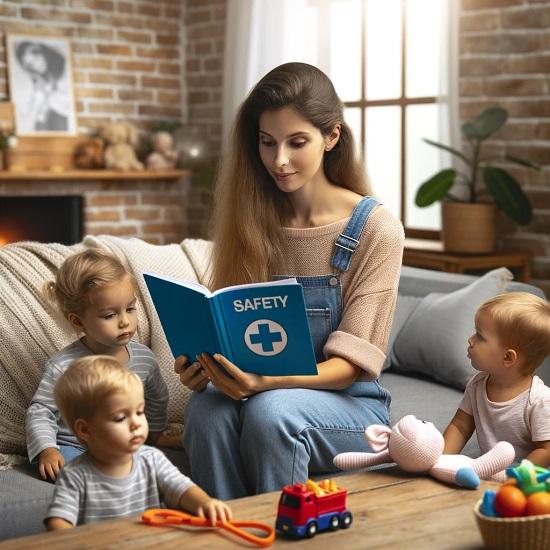Babysitting is a common practice that provides parents with the opportunity to have some time away from their children while ensuring their little ones are in safe hands. However, it’s important to remember that babysitting also comes with a great deal of responsibility, both for the parents hiring the babysitter and for the person taking on the role of caring for the children. In this comprehensive guide, we will explore the various aspects of safety in babysitting, providing essential tips and information for both parents and babysitters to ensure a safe and enjoyable experience for everyone involved.
Safety Tips for Parents
For parents, preparing for a babysitting session involves a series of important steps to ensure the safety and well-being of their children. Here are some key safety tips for parents to consider:
1. Plan Ahead: When looking for the right babysitter, it’s essential to plan ahead. This involves childproofing your home and preparing a list of emergency contacts who can assist the sitter if necessary. It’s also important to establish clear guidelines and expectations for the babysitter.
2. Don’t Rule Out Teenagers: Responsible teenagers can be just as reliable as adults when it comes to babysitting. They often do a great job of engaging with children and can be a viable option for short outings.
3. Communicate with the Sitter: Before leaving your children in the care of a babysitter, make sure to communicate any important information about your child’s needs, medical conditions, allergies, and emergency procedures. It’s also crucial to provide contact information and clear instructions on how to handle various situations.
Safety Tips for Babysitters
Babysitting is not just about playing with children; it also involves a significant amount of responsibility. Here are some key safety tips for babysitters to consider:
1. Training and Preparation: Consider attending a certified babysitting course to gain the necessary skills and knowledge. It’s important to know the family you will be babysitting for, including their address, contact information, and any specific instructions.
2. Communication: Always keep your family informed about the details of your babysitting job, including the location, expected duration, and contact information. Dress appropriately for the job, prioritizing safety and comfort.
3. Safety During Babysitting: While actively babysitting, it’s crucial to keep your attention focused on the child and avoid distractions. Use safety precautions, such as handrails and cabinet locks, to prevent accidents and injuries.
4. Mealtime Safety: Practice good hygiene by washing hands before preparing food and ensuring that children wash their hands before eating. Keep sharp objects out of reach and take precautions to prevent spills and accidents during mealtime.
5. Emergency Preparedness: Be prepared for emergencies by taking a first aid/CPR course and familiarizing yourself with the location of first-aid supplies in the home. Additionally, have a plan in place for contacting emergency services and the child’s parents if needed.
Babysitting Classes and Resources
One of the best ways to prepare for a babysitting job is to take classes and seek valuable resources. Babysitting classes are offered by various organizations, such as the Red Cross, local hospitals, and community centers. These classes provide essential training in first aid, CPR, and childcare skills, giving babysitters the knowledge and confidence to handle various situations that may arise while on the job.
In addition to formal classes, it’s beneficial for babysitters to seek guidance from experienced individuals in the field. Talking to other babysitters can provide valuable insights and practical advice for handling different scenarios.
Communication and Preparedness
Effective communication and thorough preparedness are key elements of successful and safe babysitting. Before starting a babysitting job, it’s important to communicate with the parents, gather essential information about the children under your care, and establish clear emergency protocols. Having a plan in place for transportation, emergency contacts, and knowing the layout of the home are crucial aspects of being well-prepared for the job.
Conclusion
Safety in babysitting is a multifaceted aspect that requires careful consideration and proactive measures from both parents and babysitters. By following the safety tips provided in this primer, parents can ensure that their children are in good hands while they are away, and babysitters can approach their roles with confidence and preparedness. Babysitting is a rewarding experience that can foster positive relationships and create lasting memories, and prioritizing safety is essential for a successful and enjoyable babysitting experience for all parties involved.










